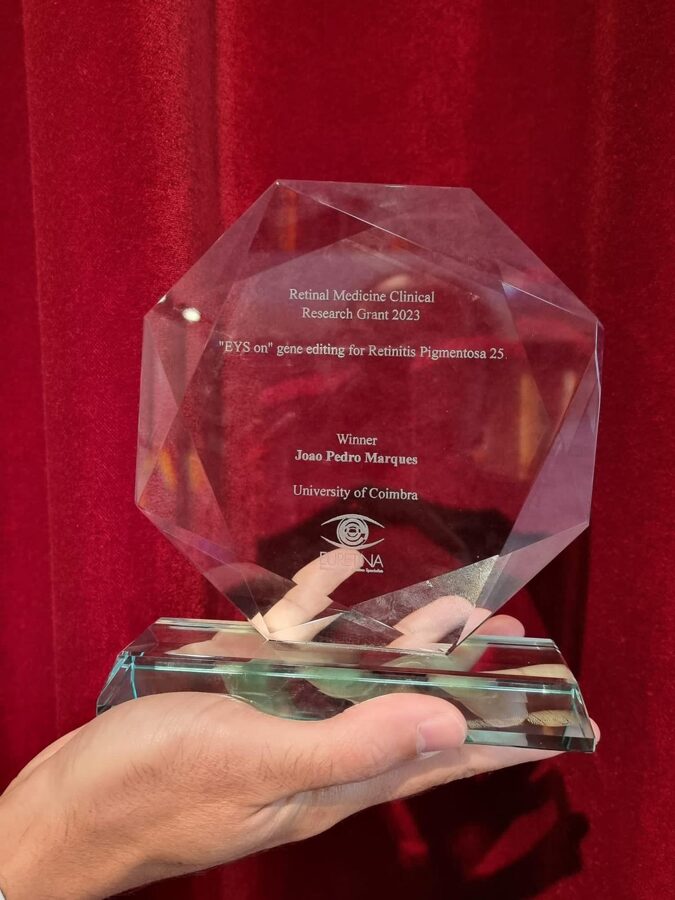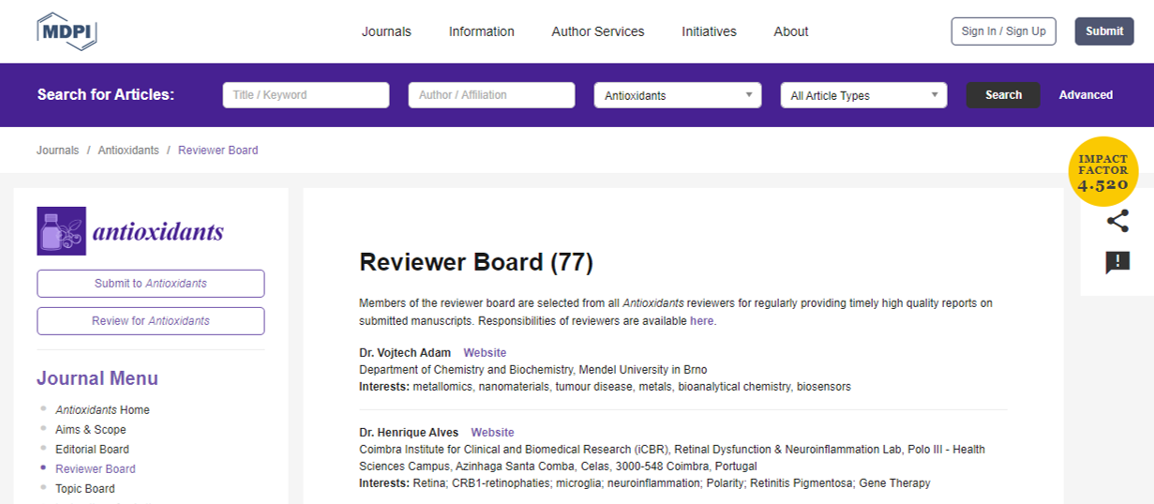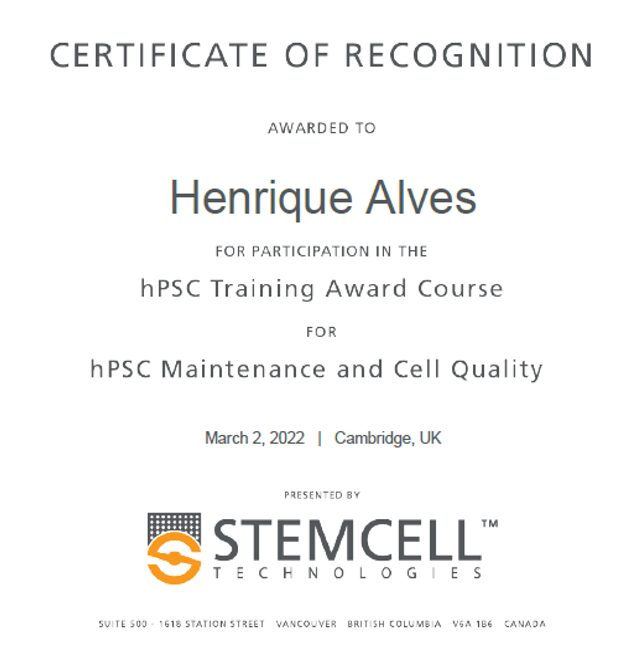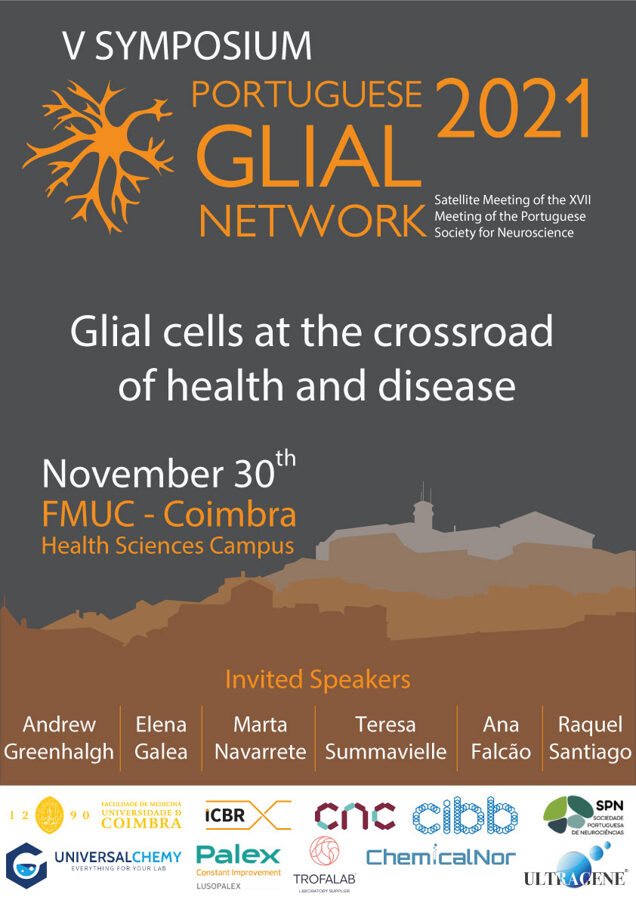👏🎉 EURETINA 2023 Retinal Medicine Clinical Research Grant Winner🌟
10 Oct, 2023,
No comments
Thrilled to share the news of the EURETINA 2023 Retinal Medicine Clinical Research Grant awarded to João Pedro Marques (PI), alongside Henrique Alves (co-PI), Francisco Ambrosio, and Peter Quinn. 🏆👁️
Our team, Retinal Dysfunction & Neuroinflammation Lab @ University of Coimbra, will have a pivotal role in the execution of the project.
This project is a testament to the power of clinical-fundamental research collaboration. 🤝💡
This achievement highlights the importance of bridging disciplines
 to tackle clinical challenges in the IRDs field. Exciting times ahead! 🚀
to tackle clinical challenges in the IRDs field. Exciting times ahead! 🚀
Bike4Sight
30 Jun, 2022,
No comments
#Blindness #Biking #CRB1 #Compostela
ENG: Four friends, 4 bicycles, 3 days, 300 km between Fafe (Portugal) and Santiago de Compostela (Spain), in full autonomy, and everything for a good cause!
PT: E assim foi... 4 amigos, 4 bicicletas, 3 dias, 300 km entre Fafe e Santiago de Compostela, em autonomia total... e tudo por uma boa causa!

New work!
17 May, 2021,
No comments
IL-23 receptor deficiency results in lower bone mass via indirect regulation of bone formation
- PMID: 33986359
- DOI: 10.1038/s41598-021-89625-2
Abstract
The IL-23 receptor (IL-23R) signaling pathway has pleiotropic effects on the differentiation of osteoclasts and osteoblasts, since it can inhibit or stimulate these processes via different pathways. However, the potential role of this pathway in the regulation of bone homeostasis remains elusive. Therefore, we studied the role of IL-23R signaling in physiological bone remodeling using IL-23R deficient mice. Using µCT, we demonstrate that 7-week-old IL-23R-/- mice have similar bone mass as age matched littermate control mice. In contrast, 12-week-old IL-23R-/- mice have significantly lower trabecular and cortical bone mass, shorter femurs and more fragile bones. At the age of 26 weeks, there were no differences in trabecular bone mass and femur length, but most of cortical bone mass parameters remain significantly lower in IL-23R-/- mice. In vitro osteoclast differentiation and resorption capacity of 7- and 12-week-old IL-23R-/- mice are similar to WT. However, serum levels of the bone formation marker, PINP, are significantly lower in 12-week-old IL-23R-/- mice, but similar to WT at 7 and 26 weeks. Interestingly, Il23r gene expression was not detected in in vitro cultured osteoblasts, suggesting an indirect effect of IL-23R. In conclusion, IL-23R deficiency results in temporal and long-term changes in bone growth via regulation of bone formation.
Antioxidants 2020 Outstanding Reviewer Awards for Excellence in Manuscript Review
22 Feb, 2021,
No comments
"
Dear Colleagues,
We are pleased to announce the winners of the Antioxidants 2020 Outstanding Reviewer Awards. The Antioxidants Editorial Board and Editorial Team gratefully acknowledge the time and energy dedicated by reviewers in checking the manuscripts submitted to Antioxidants. It is due to their efforts that the high quality of the journal and quick turnaround have been maintained.
Two Outstanding Awards for Excellence in Manuscript Review:
CHF 500 and the opportunity to publish a paper free of charge in Antioxidants in 2021
Dr. C. Henrique Alves
Retinal Dysfunction and Neuroinflammation Lab, Coimbra Institute for Clinical and Biomedical Research (iCBR), Faculty of Medicine, University of Coimbra, Coimbra, Portugal
Interests: microglia; retina; RPE; neurodegeneration; inflammation; CRB1; gene therapy; retinal organoids; neurodevelopment; IL-23; IL-17; mitochondria
Prof. Dr. Paweł Kafarski
Department of Bioorganic Chemistry, Wroclaw University of Science and Technology, Wroclaw, Poland
Interests: natural products of honey; herbs and mushrooms; antioxidants; medicinal chemistry; food alduteration
Two Recognition Awards for Manuscript Review:
The opportunity to publish a paper free of charge in Antioxidants in 2021
Dr. Ana Čipak Gašparović
Division of Molecular Medicine, Rudjer Boskovic Institute, Zagreb, Croatia
Interests: oxidative stress; antioxidative defense; lipid peroxidation; reactive oxygen species (ROS); cancer; cancer stem cells; aquaporins
Prof. Dr. Francisco Solano
Department of Biochemistry, Molecular Biology and Immunology, University of Murcia, Murcia, Spain
Interests: tyrosinase and melanogenesis proteins; melanin pigmentation; photoprotection and other melanin functions; polyphenols as antioxidants; oxidative stress and ROS; skin-lightening agents; ocular; melanin; melanin as polymeric biomaterial; bacterial and fungal melanins; catecholamines; polyamines and amino acid metabolism
Kind regards,
Prof. Dr. Stanley Omaye
Editor-in-Chief, Antioxidants
https://www.mdpi.com/journal/antioxidants/awards
New work!
2 Jan, 2021,
No comments
AAV-CRB2 protects against vision loss in an inducible CRB1 retinitis pigmentosa mouse modelNew review
11 Nov, 2020,
No comments
Pleased to share our most recent review article written in collaboration with Peter Quinn, Francisco Ambrósio and Paula Moreira.PINK1/PARKIN signalling in neurodegeneration and neuroinflammation
We discuss the role of PINK1/PARKIN signalling in neurodegeneration and neuroinflammation. With a particular focus on its role in mitochondrial dysfunction in disorders such as amyotrophic lateral sclerosis (ALS), Alzheimer ́s, Huntington ́s and Parkinson ́s diseases, as well as eye diseases such as age-related macular degeneration (AMD) and glaucoma.
https://actaneurocomms.biomedcentral.com/articles/10.1186/s40478-020-01062-w#Ack1
Special Issue "Oxidative Stress in Neurodegeneration and Neuroinflammation"
15 Oct, 2020,
No comments
Oxidative stress, neurodegeneration and neuroinflammation are interrelated factors in the aetiology of several brain and retinal degenerative disorders, such as Alzheimer’s and Parkinson´s disease, retinitis pigmentosa, age-related macular degeneration and glaucoma. Oxidative stress results from the imbalance between the production and consumption of reactive oxygen species (ROS). This shift in redox homeostasis can initiate the synthesis and release of pro-inflammatory mediators and the infiltration of immune cells that can further potentiate oxidative stress. These cyclical processes, when uncontrolled, contribute to neuronal cell loss and severe tissue damage.
We invite you to submit your latest research findings or a review article to this Special Issue, “Oxidative Stress in Neurodegeneration and Neuroinflammation”. We aim to gather the latest research about the role of oxidative stress in neurodegeneration and neuroinflammation. We welcome submissions concerning all research models (e.g., in vitro, iPSC-derived cells, organoids, animal models), focusing on all the different nervous system tissues and cell types (e.g., retina, brain, spinal cord, neurons, microglia, astrocytes) and using all types of molecular and cellular approaches that contribute to unraveling and clarifying the pathophysiology and the molecular mechanisms related to neurodegenerative disorders.
https://www.mdpi.com/journal/antioxidants/special_issues/Oxidative_Stress_Neurodegeneration
Our latest review is out!
14 May, 2020,
No comments
Microglia Contribution to the Regulation of the Retinal and Choroidal Vasculature in Age-Related Macular Degeneration
Abstract
The retina is a highly metabolically active tissue with high-level consumption of nutrients and oxygen. This high metabolic demand requires a properly developed and maintained vascular system. The retina is nourished by two systems: the central retinal artery that supplies the inner retina and the choriocapillaris that supplies the outer retina and retinal pigment epithelium (RPE). Pathological neovascularization, characterized by endothelial cell proliferation and new vessel formation, is a common hallmark in several retinal degenerative diseases, including age-related macular degeneration (AMD). A limited number of studies have suggested that microglia, the resident immune cells of the retina, have an important role not only in the pathology but also in the formation and physiology of the retinal vascular system. Here, we review the current knowledge on microglial interaction with the retinal vascular system under physiological and pathological conditions. To do so, we first highlight the role of microglial cells in the formation and maintenance of the retinal vasculature system. Thereafter, we discuss the molecular signaling mechanisms through which microglial cells contribute to the alterations in retinal and choroidal vasculatures and to the neovascularization in AMD.
New member of the Antioxidants reviewer board
28 Apr, 2020,
No comments
https://www.mdpi.com/journal/antioxidants/submission_reviewers
4th best publication of 2019 by Vision-research
8 Apr, 2020,
No comments
#4
| Author/s | Quinn PM, Buck TM, Mulder AA, Ohonin C, Alves CH, Vos RM, Bialecka M, van Herwaarden T, van Dijk EHC, Talib M, Freund C, Mikkers HMM, Hoeben RC, Goumans MJ, Boon CJF, Koster AJ, Chuva de Sousa Lopes SM, Jost CR, Wijnholds J |
|---|---|
| Journal | Stem Cell Reports, 2019 May 14;12(5):906-919 |
| Comment | Manuscript describes a retinal phenotype in cultured human CRB1 patient iPSC-derived retinal organoids as previously detected in vivo in mice lacking retinal CRB1 or CRB2. |
New work!
10 Mar, 2020,
No comments
, 18 (3), e3000470
Crumbs2 Mediates Ventricular Layer Remodelling to Form the Spinal Cord Central Canal
Meeting - Portuguese Glial network
29 Feb, 2020,
No comments
Save the date May 15th - Coimbra
https://redeglial.weebly.com/v-symposium.html
New book chapter
6 Jan, 2020,
No comments
Keywords: Crumbs homologue-1; Leber congenital amaurosis; Microglia; Retina; Retinal inflammation; Retinitis pigmentosa.
New work!
13 Nov, 2019,
No comments
CD4+CCR6+ T cells, but not γδ T cells, are important for the IL‐23R‐dependent progression of antigen‐induced inflammatory arthritis in mice
New arrival to the lab! Optomotor (PhenoSys qOMR)
31 Oct, 2019,
No comments
We have a new toy in the lab!
The optomotor response (OMR) is a reflex used to assess visual function. The PhenoSys qOMR (quantitative optomotor response) is a unique system that automatically measures the OMR with minimal experimenter effort. It uses a virtual stimulation cylinder that continuously aligns with the animal´s head position. Based on real-time head tracking, quantitative OMR measurements run fully automatically and objectively.
More info at:
https://www.phenosys.com/innovations/qomr/ 




